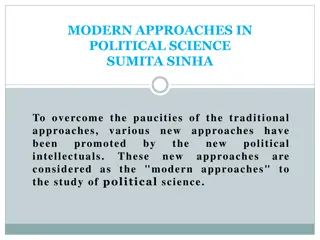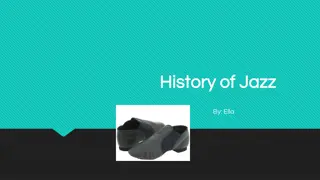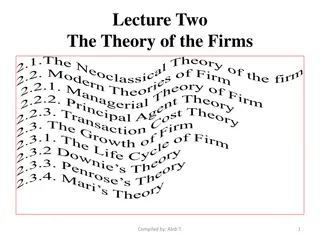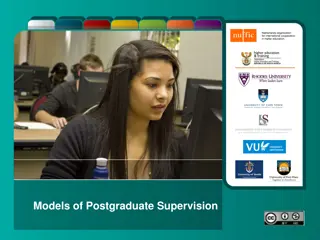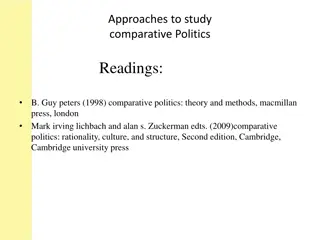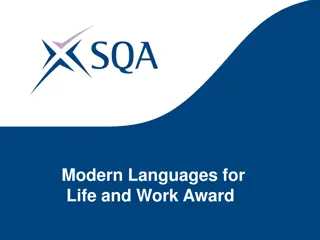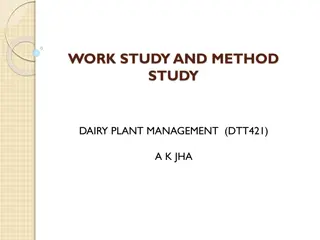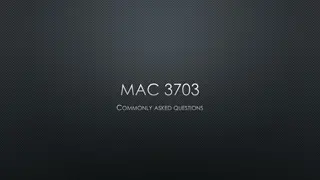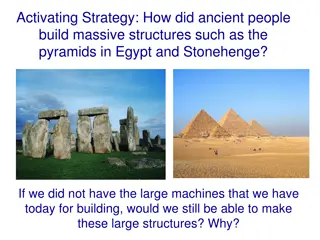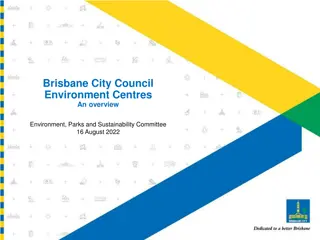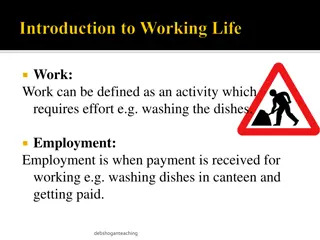Diverse Approaches to Modern Work Environment
Explore alternative ways of working, including permanent full-time positions, part-time roles, flextime arrangements, and compressed workweeks. Delve into job creation, the impact of AI, and examples of varied work setups. Discover how these methods can influence your career planning and meet contemporary workforce needs.
Download Presentation

Please find below an Image/Link to download the presentation.
The content on the website is provided AS IS for your information and personal use only. It may not be sold, licensed, or shared on other websites without obtaining consent from the author.If you encounter any issues during the download, it is possible that the publisher has removed the file from their server.
You are allowed to download the files provided on this website for personal or commercial use, subject to the condition that they are used lawfully. All files are the property of their respective owners.
The content on the website is provided AS IS for your information and personal use only. It may not be sold, licensed, or shared on other websites without obtaining consent from the author.
E N D
Presentation Transcript
Presentation Overview How are jobs created? Alternative ways to work Contingent workforce The gig economy Retirement CIP perspective
Job Creation Where do jobs come from? How might this How might this inform your inform your career planning career planning and job hunting? and job hunting? Consumer wants & needs what are some examples of these? Number of jobs created by new businesses success & failure of start ups Impact of artificial intelligence (AI) on future employment
Alternative Ways to Work: Examples Permanent full-time Moonlighting positions Job sharing Telecommuting Part-time Self-employment, Flextime, Compressed workweek, Comp time Overtime independent contracting Shift work Cooperatives
Permanent Full-Time Positions Most common way of working (typically 50 to 80% of workers) Term permanent may have less meaning in today s economy Individuals work directly for the organization with full benefits
Part-Time Positions Most common alternative way to work Defined as 1-34 hours per week Allow employers to adjust to changes in consumer demands Meets needs of employees with other personal responsibilities
Flextime Which of Which of these might these might appeal to you appeal to you or not? or not? Variety of ways to flex e.g., 4 days at 10 hours per week, 6:30 am-3:30 pm, working longer days and half days, weekends, etc.
Flextime What are some advantages of flextime? Helping employees meet other obligations Helping employers cover different shifts Help communities with traffic problems
Compressed Work Week/ Comp Time Variations on flextime Working extra hours to have some days off Allowing employees to work extra hours and then bank them for personal time
Overtime Hourly vs. salaried employees how do they differ? Role of U.S. Fair Labor Standards Act on hourly (or non-exempt) employees What accounts for employers use of overtime? Check organization s policy on overtime work
Shift Work 24-hour work schedules How might How might shift work shift work affect affect employees employees lifestyle and lifestyle and other life roles? other life roles? including night, early morning, and weekend work May be expected of workers at all levels
Moonlighting Examples include: What are the What are the pros and pros and cons of cons of moonlighting? moonlighting? 2 part-time jobs Full-time job plus a part-time job 2 full-time jobs
Job Sharing Single job shared by 2 people What are some advantages of job sharing for individuals? For organizations? What are some keys to proposing a job sharing plan to one s employer?
Telecommuting Working from a remote site away from the office Home-based work most common Made possible because of technology What are some pros and cons of telecommuting for workers & organizations?
Self-Employment/ Independent Contracting Important source of jobs 10% of the workforce Growth in women-owned businesses Failure rate Importance of using resources on starting a business Distinctions between employees & independent contractors (see Table 9.1)
Cooperatives Worker owned companies, often found in rural communities & states Organized to meet a need not fulfilled by the marketplace What are some examples of cooperatives? How might this type of work fit with your skills, interest, & values?
Contingent Workforce One of the fastest growing areas of the economy Has expanded to many different industries Variety of terms used (see Table 9.2) Nature of the work is uncertain, unpredictable, dependent on employers needs Contingent workers now a fixed part of many organizations
Outsourcing Organizations contracting with other companies to do work previously done by organization s employees Switching from a permanent employee to working as a contingent worker and doing the same job What are some examples of jobs that can or have been outsourced? How might this affect you as a worker?
Employee Leasing Similar to outsourcing, leasing company leases employees back to an organization Often done to cover personnel functions What could this mean if you are working in an organization or seeking a job?
Temporary Services What are the What are the pros and pros and cons of temp cons of temp work? work? Temps are in a job with an ending date Temporary employment vs. working for a staffing agency Distinguish between the terms, employee, employer, and client in the context of temporaryemployment What does temp-to-hire mean?
The Gig Economy Various terms used to describe this type of contingent work Covers a wide variety of occupations Often based around digital matching Benefits & costs of gig work What might make someone choose to work in the gig economy?
Issues with Contingent Work Contingent work and job satisfaction Nature of employee benefits or lack thereof Being tied to work that provides no benefits or paid vacation How does precarious work affect individuals employed in these positions?
Internships & Co-ops Specialized type of contingent work Provides employers with a chance to observe intern/co-op students as potential permanent employees US Department of Labor guidelines that govern unpaid internships Internships as a link to full-timepositions
What About Retirement? How do alternative ways of working affect retirement plans? Extent to which education, work, and leisure have merged in today s society Options for individuals in retirement Redefining what retirement means encore careers
CIP Perspective Self-Knowledge New ways of working can still relate to interests, values, skills, employment preferences Option Knowledge New schema and language needed for jobs and employment Connecting contingent & permanent work positions in one s career tapestry
CIP Perspective Decision Making (CASVE Cycle) Rapid changes in organizations will create more gaps for career decisions Executive Processing Requires new career metacognitions what are some of these? Thinking about the extent to which your career will include alternative ways of working
Summary Learning about options for alternative ways of working Understanding how jobs are created Social forces that impact regular and contingent jobs Potential problems associated with alternative ways of working CIP perspective












